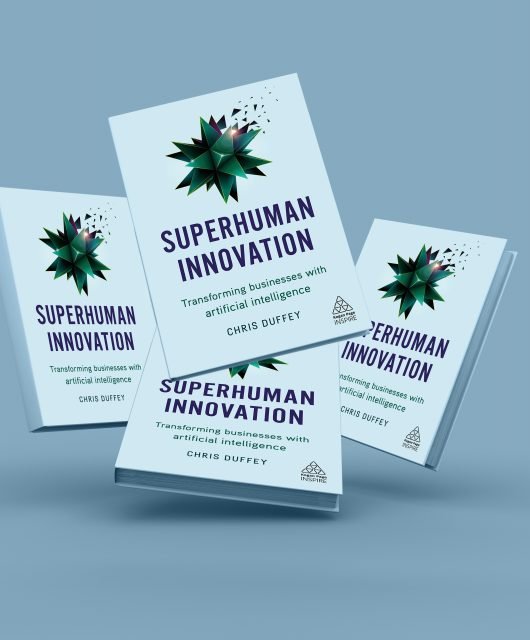Marketing Redefined: Embracing Change And Empowering Growth
By: Rasha Hamzeh, Partner/Head of Marketing and Strategy at a Tech Startup in stealth mode

Marketing is constantly evolving with the changing needs and preferences of consumers, as well as advances in technology and business. While the essence of marketing remains the same – being present for consumers when they are ready to purchase and helping them find the products they need – the strategies and tactics used to reach them are constantly evolving.
While the core drivers of marketing have remained the same, the field has evolved to become more holistic, personal, and contextual. Marketing is no longer just about pushing ads, but rather providing a personalized and relevant experience for consumers. Below is a recap of the key drivers of change in the marketing field:
Increased focus on personalization: As competition increases and consumers become savvier and more accustomed to personalized experiences, marketing campaigns will give greater emphasis on CX and would likely continue to focus on delivering highly targeted, individualized messages and experiential marketing to prospects and customers. This would involve the use of immersive technologies, voice-activated assistants, artificial intelligence, advanced targeting capabilities, and machine learning to analyze customer data to deliver personalized content, recommendations, and ads.
Increased use of video and visual content: Video content has already become a popular marketing tool, and this trend is likely to continue in the coming years. Marketers will need to be proficient in creating compelling visual content in order to stand out in a crowded marketplace and are going to need to make fresh, relevant content on a variety of channels, and at a much faster pace than they’re used to.
Influencers become a key element in marketing plans: The role of influencers will continue to evolve focusing more on authenticity and transparency rather than one-off sponsored posts or superficial relationship. This gives a rise towards using micro-influencers and nano-influencers who have smaller but highly engaged, followings that are seen more authentic and relatable, which take us to the next point.
Building on the established drivers of marketing, here are four emerging trends to watch out for:
- Brand Building comes back: Brand building is making a comeback as brands shift their focus from performance marketing to the importance of building a strong brand. This trend is evident globally, as demonstrated by Airbnb’s decision to allocate more of its marketing budget to long-term brand building. Peter Field and Les Binet have emphasized the importance of balancing short-term and long-term marketing efforts in this regard.
- Tiktok changes the game: TikTok’s popularity has exploded, with growth in users, engagement, and viral content. Traditional platforms have taken notice and are trying to replicate its success by focusing on genuine messaging and high levels of user-generated content (UGC). Some platforms, such as Meta, has introduced features and tools that are similar to those offered by TikTok, such as the ability to create and share dynamic, short videos set to music. Other platforms, such as YouTube, have focused on leveraging their existing user bases and content offerings to compete with TikTok an has created a special section, Shorts. In addition to introducing new features and tools, many social media platforms have also sought to address concerns about the security and privacy of user data, which has been a major issue for TikTok. For example, Meta has implemented new privacy controls and has sought to improve the transparency of their data-handling practices.
- Traditional search gets challenged: Search as we know it is being redefined with the use of chatbots and chatGPT, which are artificial intelligence (AI) technologies that enable users to have natural language conversations with a virtual assistant. It is unlikely that chatbots and chatGPT will completely replace traditional search engines like Google. While chatbots and chatGPT can provide users with a more interactive and personalized search experience, they are primarily used to enable users to have natural language conversations with a virtual assistant, rather than to provide search results. Traditional search engines still have other several advantages that make them valuable to users. Their vast amounts of data, powerful algorithms, user-friendly interface and strong record of privacy and security, and the fact that they offer a variety of features and services beyond search, such as email, maps, and cloud storage, make them an unmatchable integral part of users’ online experience. Google is reportedly also developing text-to-image and text-to-video systems to compete with OpenAI’s Dall-E 2 model, which is capable of generating digital artwork.
- Rising interest in learning and adopting blockchain technology: The adoption of blockchain technology in marketing will increase, potentially leading to the development of new forms of digital advertising and the use of cryptocurrency for marketing transactions. One way in which blockchain is affecting marketing is through the use of smart contracts to automate and streamline marketing processes, such as the tracking and payment of affiliate commissions. Another way in which blockchain is impacting marketing is through the use of cryptocurrency for advertising and marketing campaigns. Cryptocurrency can be used as a form of payment for online advertising, and it can also be used as a rewards program to incentivize customer loyalty.
The future of marketing is full of opportunity, but it’s also full of uncertainty. As we move forward, I encourage readers to think about the role they want to play in shaping the industry. What do you want to see in the future of marketing? How can you contribute to making it a reality? Let’s work together to create a bright future for the industry we love.





